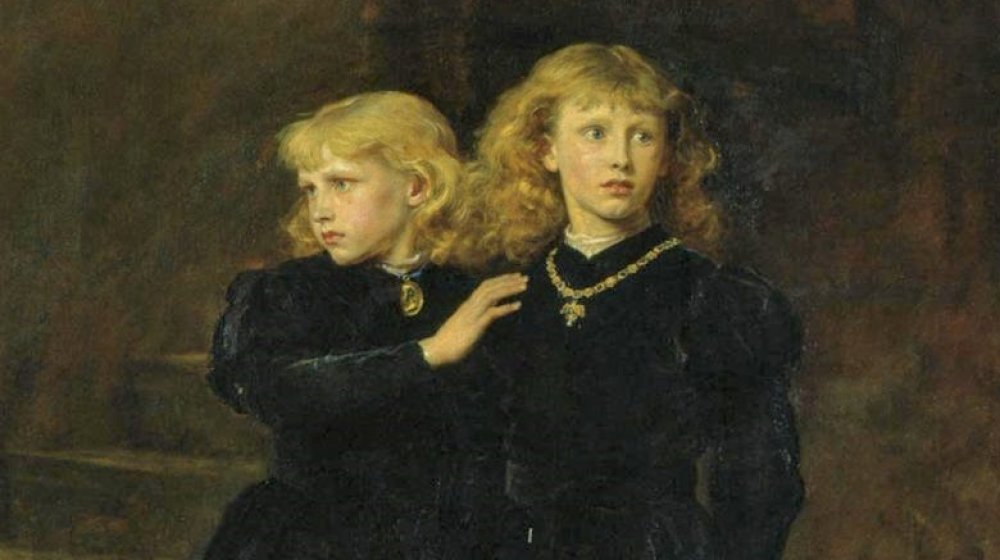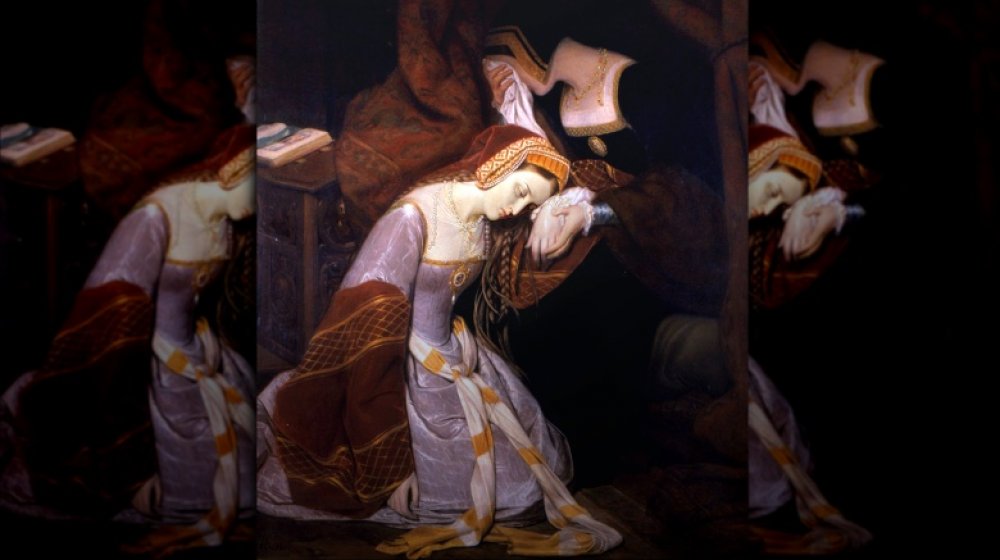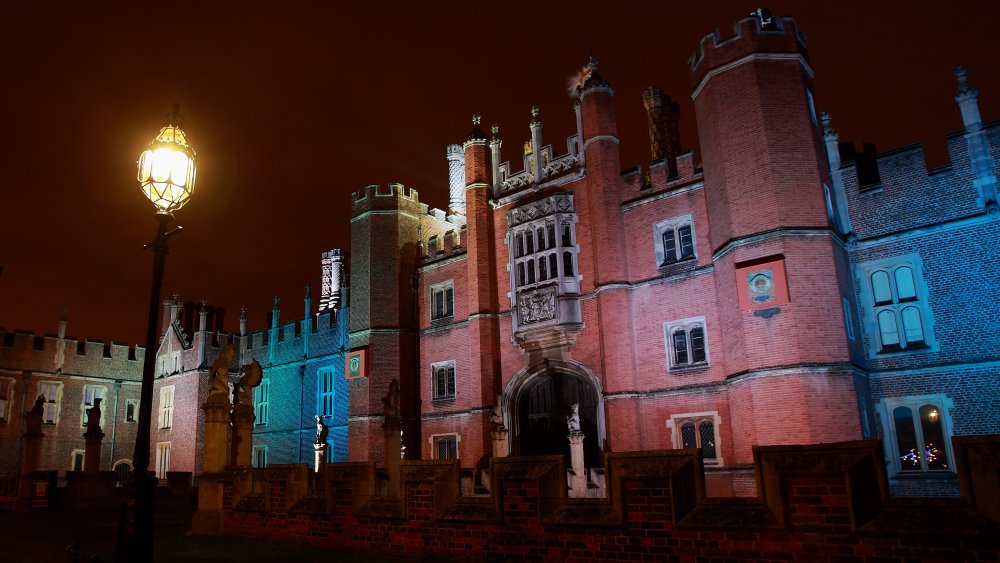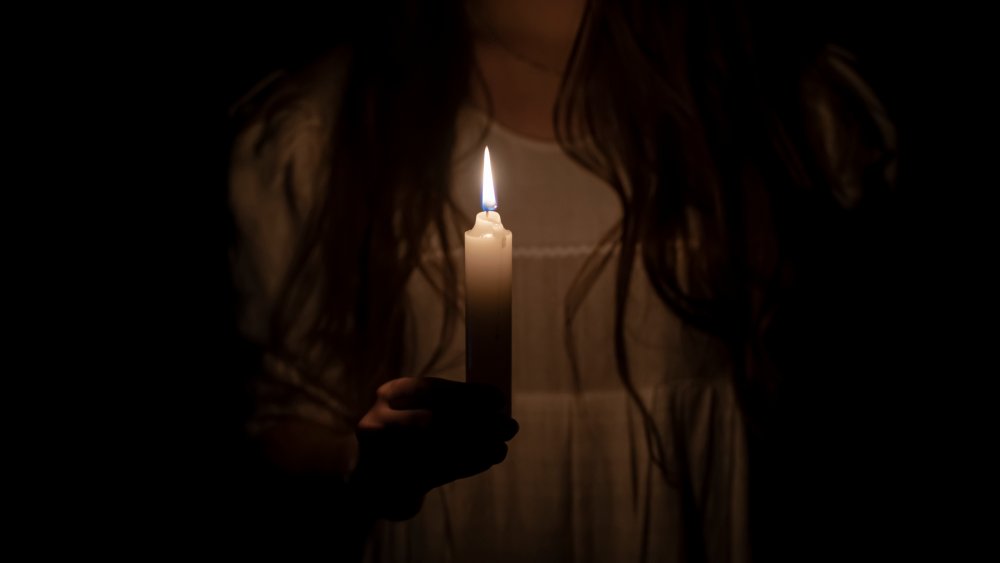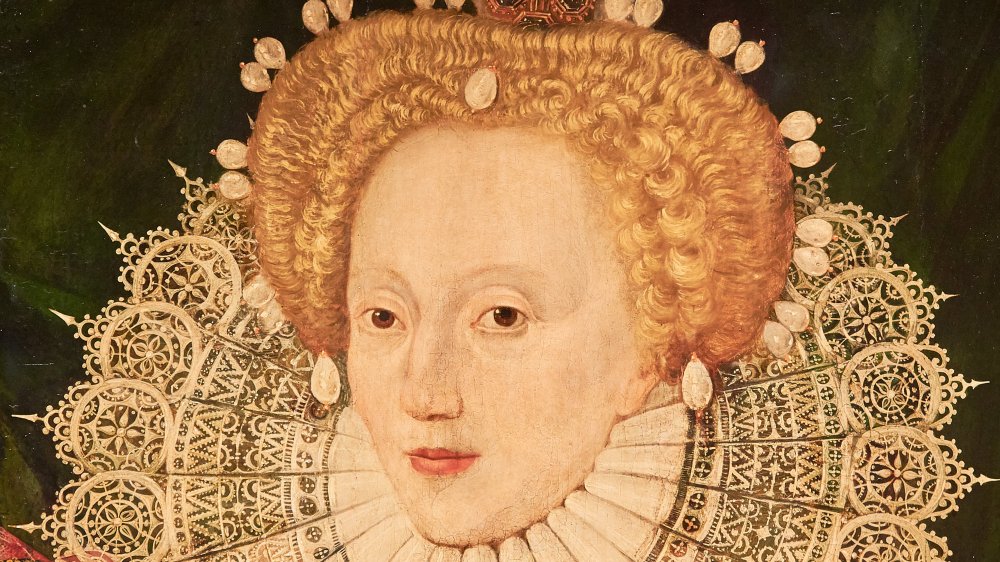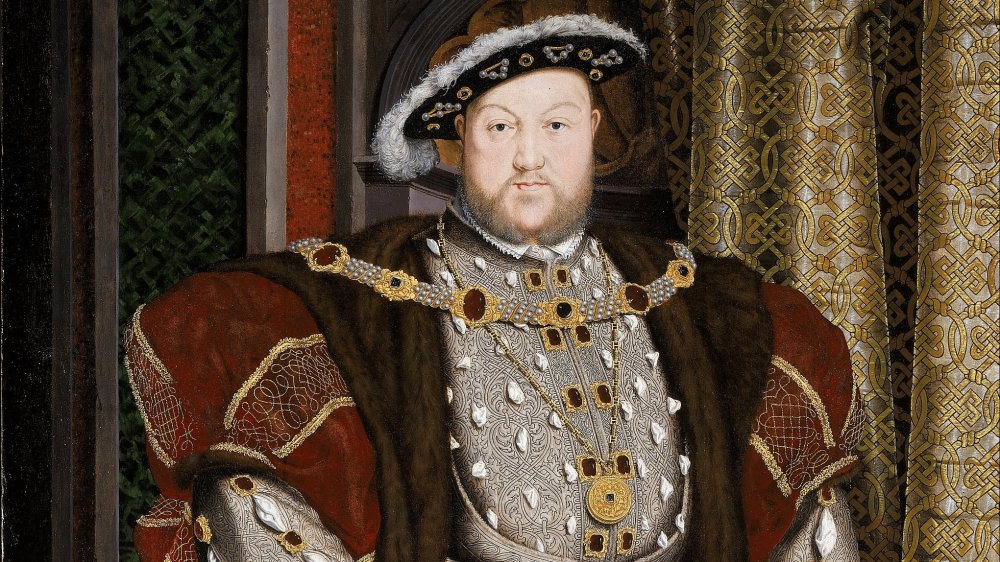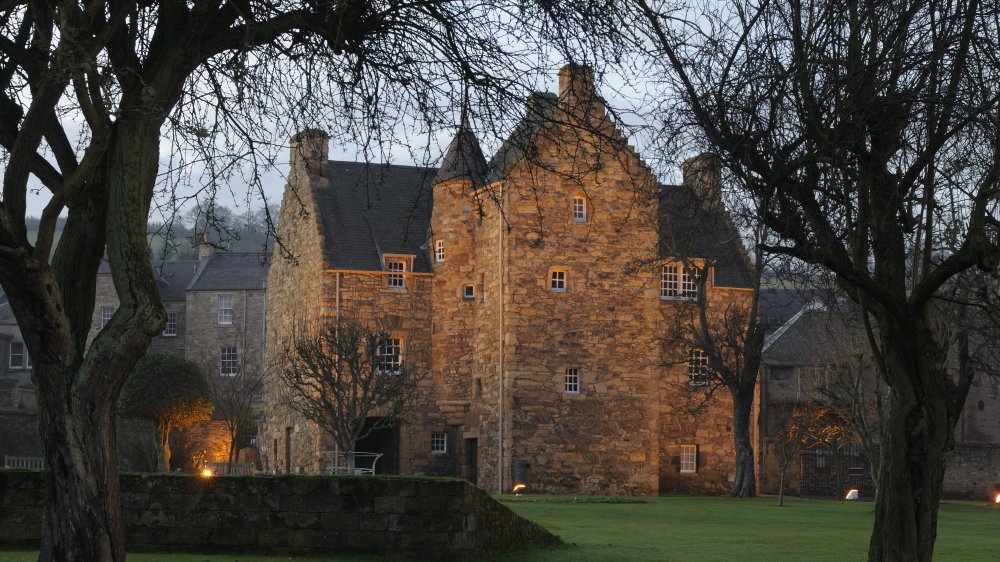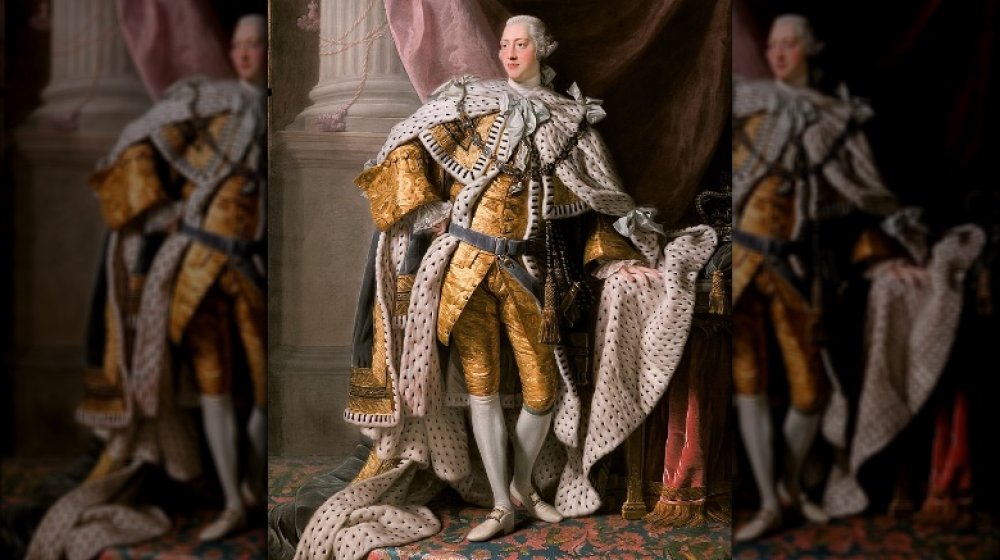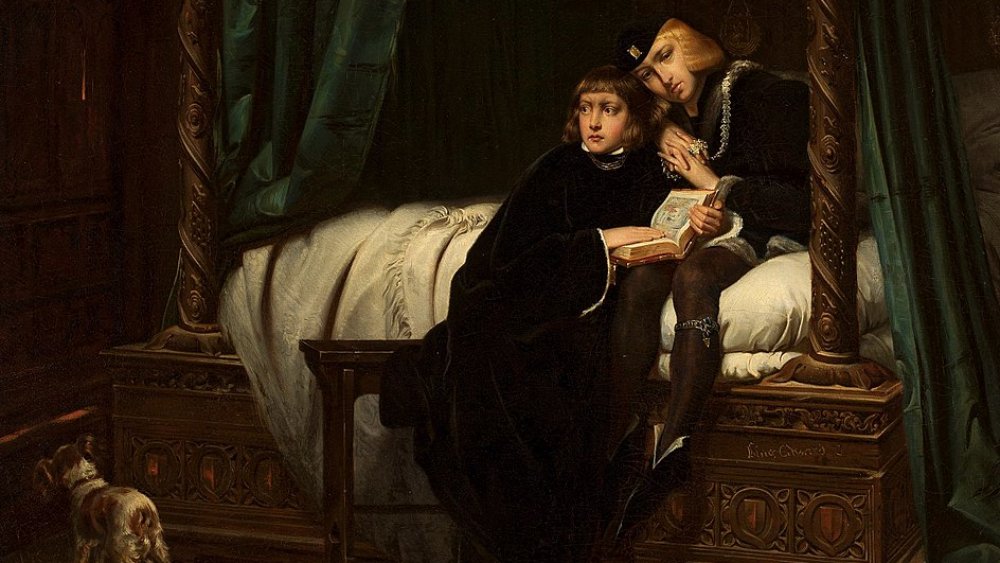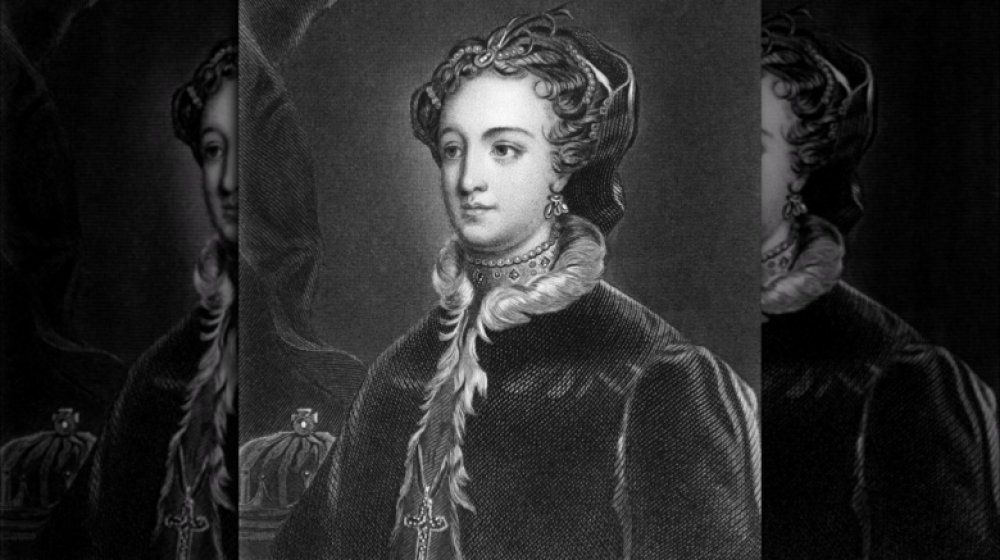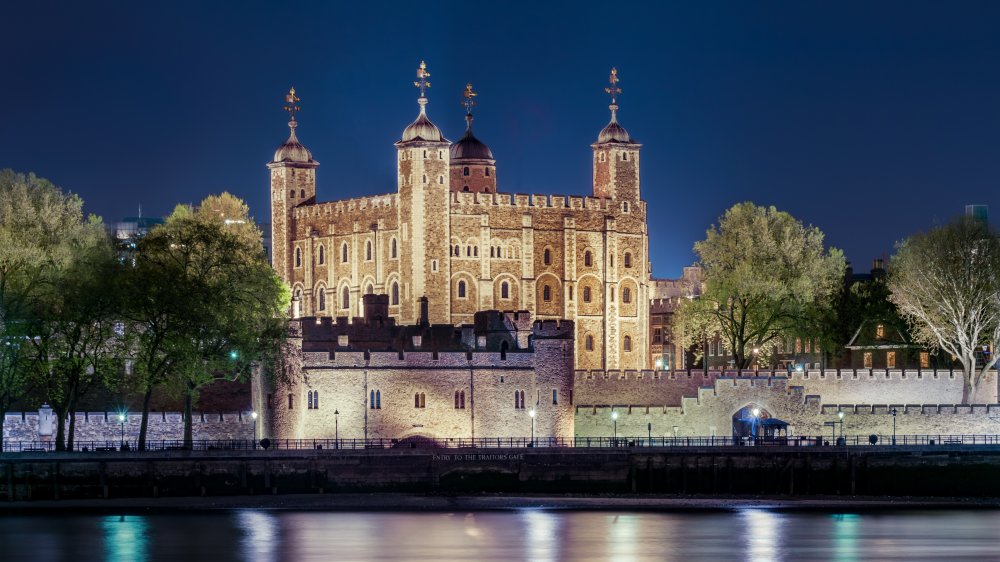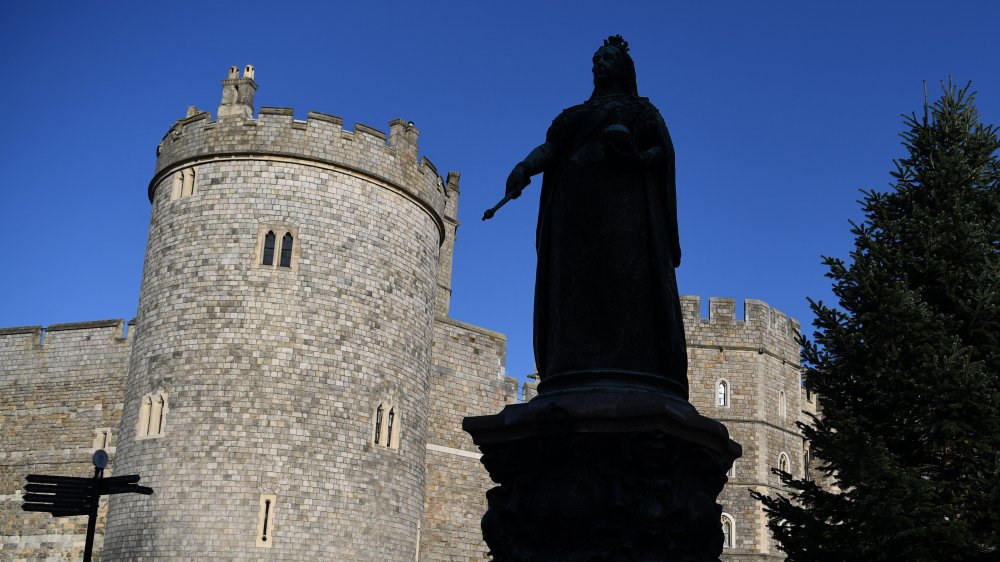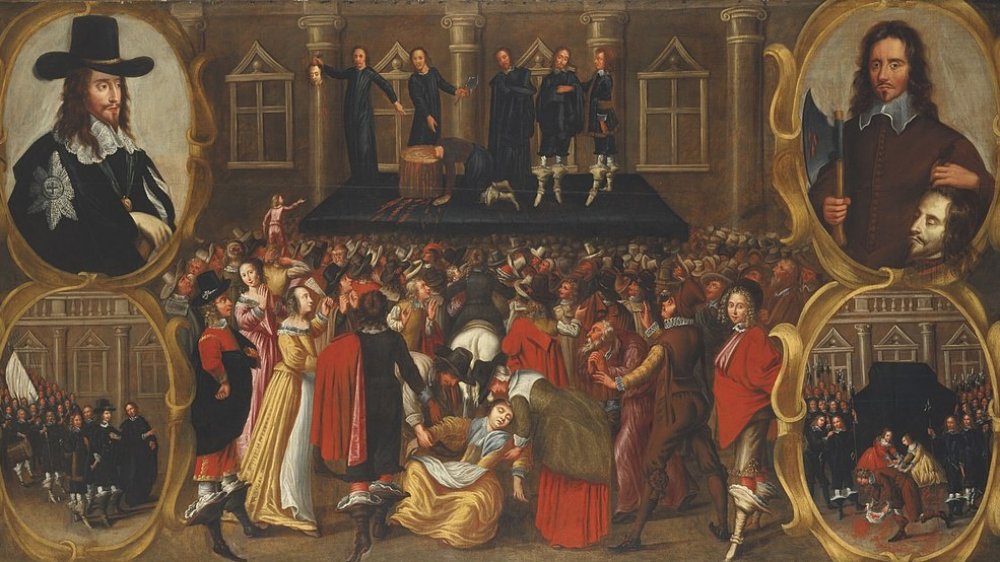Royal Ghosts That Continue To Haunt Great Britain
British royals throughout history have had one thing in common: drama. They quarreled, they snubbed each other, they married the "wrong" people, they ran from the paparazzi ... and in the more distant past, they murdered or executed each other, died in childbirth, went bonkers, and were obsessively devoted to their gardens. Yes, the royals were mean and quirky, and they hardly ever died peacefully in their sleep. And when you live a life full of violence and betrayal, you get rewarded with eternally walking around in old castles, screaming and carrying your own severed head. Ah, it's good to be the king/queen/prince/royal usurper/whatever.
Those old royals just won't die, and many of the kings and queens who once ruled the British empire still supposedly haunt the castles where they lived and loved and got their heads chopped off. Here's a list of Britain's most famous royal phantoms, you know, if you believe in that sort of thing.
Anne Boleyn is one of the most famous ghosts in Great Britain
Depending on which story you believe, Anne Boleyn was either a cheating, power-loving, husband-stealing, not-super-nice person, or she married Henry VIII because she didn't feel like she had a choice. (Hint: It was probably the latter). At any rate, Anne Boleyn got executed by her husband for the great crime of giving birth to a girl instead of a boy, and according to The Anne Boleyn Files, she's still not over it.
Anne's restless spirit has shown up in at least seven different places over the years, from the place of her birth to the place of her death. In one of the most elaborate tales, Anne's spirit haunts Blickling Hall, her birthplace, but evidently only on the anniversary of her death, which seems a bit backwards but whatever. Ghosts aren't exactly known for being rational. Anyway, Anne's ghost arrives in fine style, in a carriage drawn by six horses, driven by a coachman. All of whom are missing their heads, by the way, because that's evidently a job requirement if you want to drive the ghost of Henry VIII's second wife around.
Anne, who's sitting inside the carriage and holding her severed head in her lap, disembarks, and the carriage disappears, leaving her to haunt Blickling alone until daybreak. She also haunts the Tower of London, of course, where she's rumored to have given some poor sentry a fatal heart attack when he encountered her phantom in a stairwell.
Catherine Howard and the Haunted Gallery
By the time Henry VIII got around to his fifth wife, he had a bit of a reputation as being a dude you didn't really want to marry because of the whole wife-killing thing he was prone to doing. But Catherine Howard married him anyway, probably because she was very young and seduced by the idea of being queen ... and probably also because she wasn't really allowed to make her own choices, which is pretty much the way things were for upper-class women in the Tudor era, especially very young upper-class women.
Anyway, Henry found out that Catherine had preemptively cheated on him, which evidently was a thing in Henry's mind. In other words, he didn't like knowing that his young wife had once been in a relationship with someone else, so he invented a bunch of charges against her and had her held at Hampton Court Palace prior to her execution. According to The Anne Boleyn Files, at one point Catherine broke away from her guards and ran screaming down a hallway towards the chapel (where Henry was probably praying for forgiveness for being such an epic donkey's butt), hoping that she could appeal to his sense of mercy. But she was dragged screaming back to her room, and the execution went on as planned. Today, the hallway is known as "the Haunted Gallery," because it's rumored that her ghost still runs down the corridor, begging for mercy from her donkey butt husband.
Jane Seymour died after giving birth
Jane Seymour was the only one of Henry's six wives who wasn't divorced, executed, or nearly executed but escaped the ax because Henry died. On the contrary, Henry thought of Jane as his one true wife, not because he especially loved her but because she had the good sense to give him an actual male heir. Henry married Jane Seymour 11 days after the execution of her predecessor, Anne Boleyn, so clearly neither she nor her new husband seemed to be especially bothered with quaint ideas about respect for the dead or anything. But even though Jane Seymour was the favorite wife and even though she never did anything so treasonous as giving Henry a daughter, she didn't have a happy ending. Instead, she died young, just 12 days after giving birth to Henry's son Edward.
Jane Seymour still haunts Hampton Court Palace, though for some reason she doesn't really hang around Apartment 33, the room where she gave birth to Edward and later died. Instead, she's seen wandering on the cobblestones of Clock Court, and according to On the Tudor Trail, she's also been seen climbing the stairs to the Silver Stick Gallery on the anniversary of Edward's birth, dressed in a white robe and carrying a candle. Hopefully, she never encounters the ghost of Anne Boleyn — who's also been seen wandering around the grounds at Hampton Court palace — because that would be super awkward.
Queen Elizabeth I never left Great Britain
Queen Elizabeth I was a lot more successful than her mother Anne Boleyn, but that doesn't mean her life was without drama, violence, and betrayal. And as we know, drama, violence, and betrayal are some of the most important ingredients for a restless spirit. Elizabeth's ghost has been seen in a couple of different places. In one famous story from 1951, two tourists spotted what they thought was a wax figure of the Virgin Queen at the end of the Long Gallery at Hatfield House, Elizabeth's childhood home, but when they approached it, it vanished. The problem with the story, though, is that the ghost was seen in a building that was constructed after Elizabeth's death, so it seems kind of odd that she'd haunt that place instead of the original Royal Palace nearby.
Like so many other royal ghosts, though, Elizabeth doesn't stick with a single haunting. According to The Anne Boleyn Files, she also haunts the Royal Library at Windsor castle. Witnesses have reported hearing the sound of her footsteps, followed by her specter as it crosses from the library to another room. Among those who said they've seen her are George III, Edward VII, and George VI. George III claimed to have spoken to Elizabeth, who told him she was "married to England." George VI claimed to have seen her eight nights in a row, just as Britain was on the cusp of World War II.
Henry VIII finally got what was coming to him
Everybody knows that Henry VIII was a really messed up dude. He perpetrated the suffering of royals like Anne Boleyn and her cousin Catherine Howard, but he wasn't just a wife killer. The man was an equal opportunity killer, too. He killed "heretics," rivals, his wives' friends and associates, nuns (well, at least one nun), monks, and random other people he didn't like. So even if he wasn't tormented by others during his long and horrible reign, he certainly did enough tormenting of his own to earn a place as one of Britain's eternally restless spirits.
According to Bustle, Henry VIII still roams Windsor castle. His ghostly figure paces the hallways, shouting and carrying on angrily, as if looking for the next person to send to the block. Some guests also claim to have heard the spooky sounds of Henry groaning his way down the hallway, dragging his ulcerated leg behind him. Unlike many of his ghostly cohorts, though, Henry appears to stick to Windsor Castle, as there are scant few, if any, real reports of his ghost at any other locations in England. Maybe his eternally ulcerated leg makes traveling between haunts eternally uncomfortable.
Mary, queen of hauntings
Henry VIII wasn't the only royal known for imprisoning and executing other royals. His daughter Queen Elizabeth I did it, too. Her most famous victim was Mary Queen of Scots, who was Elizabeth's Catholic counterpart in Scotland during a time when Catholics wanted Catholic monarchs and Protestants wanted Protestant monarchs, so you can imagine how that went down for everyone who was a monarch.
Elizabeth felt threatened by her cousin, not just because she was a Catholic and there were still a lot of Catholics in England, but also because she kind of had a better claim to the throne. According to Royal.UK, Mary was Henry VII's great-granddaughter, which made her next in line for the throne after Henry VIII's children. But as Anne Boleyn's daughter, there were still plenty of people who believed that Elizabeth was a bastard and therefore not the true queen of England. So to Elizabeth, Mary was a rival, and as a rival, she ended up spending 19 years as Elizabeth's prisoner before finally being executed in 1587.
Mary's ghost stays pretty busy — maybe all those years in captivity gave her a wanderlust. She's been seen in her former residences (one of which is pictured above), at the castle where her son lived, various places where she stayed, places where she was imprisoned, and at least one place she'd never even visited (Hermitage Castle). She's also said to haunt the Talbot Hotel, which houses the same oak staircase Mary descended on her way to the block.
The mad ghost George
George III was famous for being the dude at the reins of England during the American Revolution and also for being totally whackadoo. After all, he did claim to have a conversation with the ghost of Elizabeth I, so ...
There have been a lot of theories thrown around about the reasons for George III's madness, from porphyria (which is a rare genetic disorder that can cause random, temporary personality changes) to bipolar disorder (which more completely explains his mood swings and "incessant loquacity"). Despite what popular legend has led a lot of people to believe, though, George didn't spend his whole life hiding from government agents and having conversations with royal phantoms. He had bouts of madness followed by bouts of sanity, so he was more like a part-time king for much of his reign. During his bouts of madness, George would be whisked off to Windsor Castle, where he was hidden away like an embarrassing secret until he was once again fit to rule. According to Royal Central, his mournful ghost still haunts the castle, where it's often seen looking longingly out of the windows.
Two royal ghosts in the Tower of London
Two of Britain's most famous ghosts died as a duo, and they haunt as a duo, too. Edward V and his brother Richard, Duke of York were famously sequestered in the Tower of London by their uncle, Shakespeare's hunchbacked, horse-coveting villain, Richard III. The two boys, ages 13 and 10, were never seen again. According to Historic UK, no one really knows how long they remained in the Tower before they were murdered, and no one really knows if it was Richard himself who ordered their deaths or if it was Richard's successor, Henry VII, who would've had a hard time claiming the throne for himself if the two boys were still alive.
At any rate, there's little doubt that the boys were murdered. Their skeletons (or rather, two skeletons of boys who were the right age and died around the right time) were found buried under a stairwell in the Tower a couple of hundred years later. Their ghosts still haunt the Tower (because of course they do) and have appeared as two figures dressed in nightgowns, sometimes sobbing and clutching fearfully at each other. Some people have heard the ghostly laughter of children outside the Tower, so perhaps the boys' afterlife isn't all misery and terror. And according to the tabloids, one or both of them enjoys photobombing tourists, so at least they haven't lost all sense of fun over the centuries.
Obviously, Bloody Mary is busy haunting places
Affectionately remembered as "Bloody Mary," Henry VIII's first child Mary was fond of burning heretics at the stake and being grumpy. With that much negative history attached to her memory, it's hardly surprising that Mary's ghost might still be walking around England and also appearing in bathroom mirrors all over the world if you're brave enough to say her name three times.
Mary's most famous appearances have been at Sawston Hall, which is the place she hid during the short rebellion that almost put Lady Jane Grey on the throne in her stead. Mary was hidden there by the Huddleston family, and when Jane Grey's father-in-law, the Duke of Northumberland, discovered her whereabouts, he had the hall burned to the ground. Mary escaped in disguise and became the queen, and after she started burning people to death, the Huddlestons were all, "Hmm, maybe saving her wasn't such a great idea."
Anyway, according to The Complete Idiot's Guide to Ghosts and Hauntings (and take that title how you like), Sawston Hall was rebuilt with Mary's help, but even though it's not the same Sawston Hall where Mary hid during one of the more traumatic chapters of her life, she's evidently chosen to spend eternity there. Her ghost has been seen floating around the corridors and rooms and sometimes outside in the garden.
Queen for nine days, ghost for eternity
So many royals have supposedly ended up as ghosts, but what about Lady Jane Grey, the usurper who really didn't voluntarily make the choice to be a usurper but ended up with her head several feet from the rest of her body anyway? Jane Grey was a distant relative of Henry VIII and fifth in line for the throne, but Mary's brother, Edward VI, decided to make her his successor anyway, mostly because she was a Protestant and his big sister Mary was a Catholic. Unfortunately for Jane, her cousin the king was basically handing her her own severed head when he decided to question Mary's right to succeed him.
Jane Grey's reign was short-lived. She sat on the throne for nine days but was forced to give it up when it became clear that public support was not on her side, and also when her own father was all, "Don't kill me, Mary, I totally supported you this whole time, kill Jane instead." Jane's dad was pardoned, but Jane herself was executed for treason seven months later. According to Royal Central, Jane still haunts the Tower of London, where she was executed in 1554. Two guards famously saw her ghost walking the battlements at the Tower of London in 1957. Other sightings tend to happen around the anniversary of her death.
Don't mess with Queen Victoria's garden
All British royals have lives full of drama, and that was certainly true for Queen Victoria. However, it wasn't the fact her father died when she was still an infant that caused her to return as a ghost. And it wasn't that her mother kept her isolated from the world and at one point kind of hoped her daughter would die from typhoid fever so she herself could take the throne, and it wasn't the death of her beloved Prince Albert that convinced Queen Victoria to rise from the grave and take up haunting as a post-life hobby. Nope, it was people messing with her stuff.
According to Royal Central, Edward VIII's significant other disliked the spruce trees that Victoria and her husband Albert had planted in the garden at Windsor castle, so she asked Edward — Victoria's grandson — to have them removed. Work didn't proceed according to plan, though, mostly because Victoria's ghost approached the workers, waving her arms and moaning. So yeah, they all quit, and the spruce trees got to stay. Power to the spirits.
The royal ghost of Charles I stole a corpse
Charles I was born during a time when the people were starting to question the legitimacy of the monarchy, and his old-fashioned ideas about royalty got him in trouble with the English parliament. Charles thought that kings should have absolute power, just like back in the good ol' days of Henry VIII, because evidently he never read a history book and had no idea that there was nothing good about the days of Henry VIII. Anyway, parliament finally got fed up with his antics and executed him in 1649.
Charles' ghost haunts Painswick Court House, where he stayed during the Siege of Gloucester in 1643, one of the more important battles on the road to his beheading. According to Cotswolds.info, Charles' ghost likes to hang around the grounds of the Court House, and sometimes he's joined by some of his men, who are probably super annoyed about the whole "not being allowed to cross over because they have to keep serving Charles I" thing that they have to do. Witnesses have heard the sound of clanking armor as Charles' ghostly men suit up for battle.
Charles has also been seen at Chavenage House, which is supposedly the place where his fate was officially decided. Not long after his execution, his headless phantom, driving a black coach, crashed a funeral and made off with the corpse. You know, if you believe in that sort of thing.
